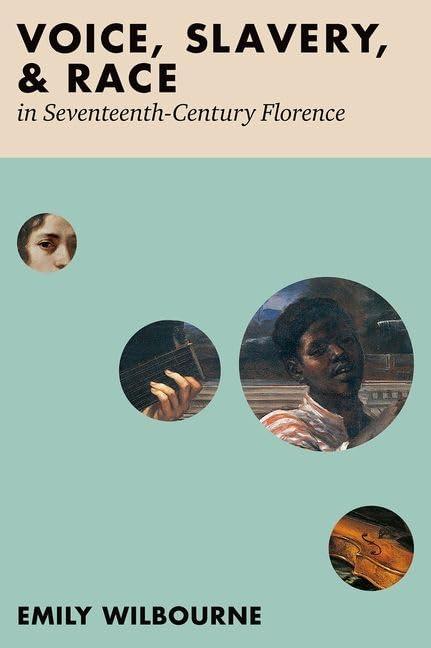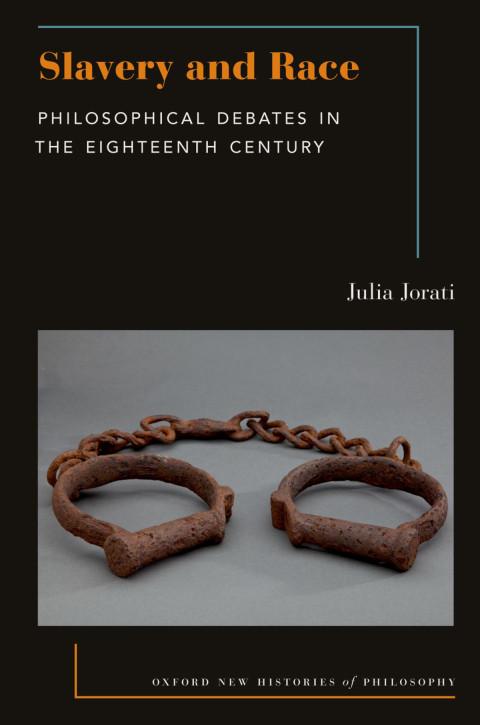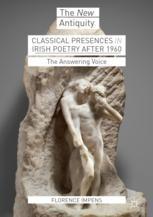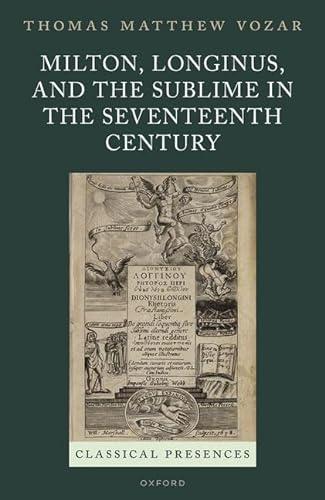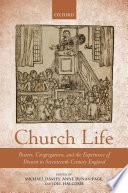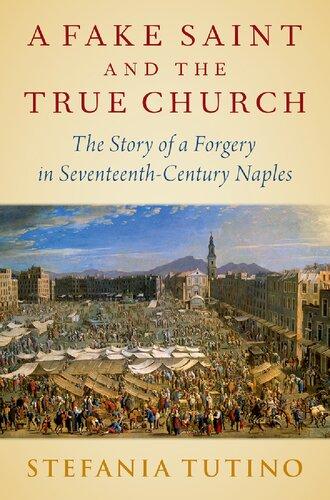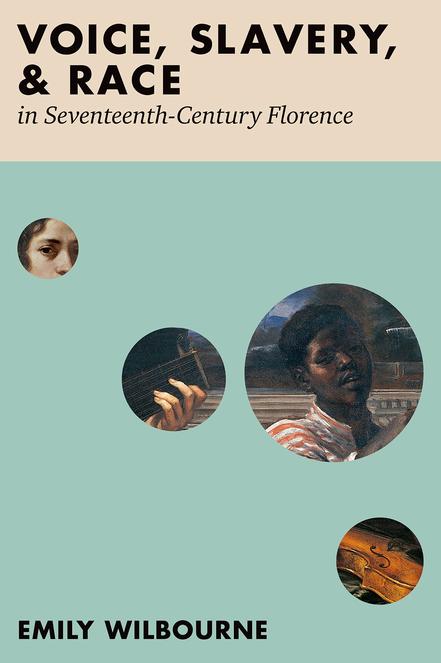Acknowledgments
The writing of books requires time, resources, access to archives and sources, reliable childcare, and a legion of friends and accomplices to cheer the spirits, read drafts, make food, make art, listen to complaints, and help in all the ways that human beings need one another every day. To finish a book during a pandemic is a rather forceful reminder of how important, how precarious, and how mutually dependent we are on one another. This book would not exist if the bulk of my research had not happened in the before times, when international travel and archive access were a question of schedules and travel budgets, not of closed borders and contagion avoidance. Likewise, the final writing process of this book would not—could not—have happened if the public schools had not reopened, welcoming my (grateful) children to a safe place outside the home for several hours most days of the week. In the placid, quiet hours of their absence, I managed to finally get this book done, though I am most grateful for the noisy, companionable hours of their presence. In academic acknowledgments, it is traditional to thank one’s immediate family last; however, under current circumstance, the last needs to be first. Luki, Anastasia, Rex: you are a shining, powerful, energizing joy. I never thought that we would spend quite as much time together, just us four, as we have the last few years, but what a delight to know that my most trenchant critics, biggest advocates, and three dearest people in the world are one and the same; to know that my three nearest and dearest make entertaining and caring companions, even under long, drawn-out, and trying circumstances. I love each of you—so much—and I couldn’t have done this, or much else, to be honest, without you.
Professionally and personally, the last two years have been long and lonely: as of January 2022, I have yet to return to the physical classroom; conference after conference has postponed or “moved” online; and so many people have left New York that at times, our busy, vibrant city has seemed like a ghost town. I have missed the presence of friends, colleagues, and students and the serendipity of chance interactions. I miss the way ideas bounce in space and am heartily sick of Zoom anything. I therefore want to celebrate those who have managed to be present, even in absence; those who mailed
coffee, wine, or cards or picked up the phone; those who visited on my stoop; those who sat with me at outdoor concerts or in cold, outdoor coffee shops, walked briskly round the block or the park or the Chelsea piers, or knitted in solidarity while seated six feet apart on the stairs. Here—in a jumble of family, friends, colleagues, students, and those border crossers who fit more than one category—are those who have gotten me through: María Edurne Zuazu (cited first, so that the Z doesn’t make her last); Gael Cresp; Stephen Wilbourne; Elizabeth Wilbourne; Rebecca Wilbourne; Yun Emily Wang; Suzanne G. Cusick; Karen Henson and Anne Stone (the best of friends and best of colleagues); Elizabeth Fleming; Elizabeth Weinfield; Elizabeth Clayton (the Elizabeths in my life are multiplying); Sara James; LJ Jellinek; Terese Wadden; Francesca Fantappiè; Nanika Coors; Serena Parker (those birthday balloons make me smile every time I think of them); Teddy Hunter; Greg Costanzo; Marsha Stephanie Blake; Michael Stevens; Amy Brosius; my AMS mentees Daniel Castro Pantoja, Anne Levitsky, Samantha Ege, and Alecia Barbour; Laura, Kelly, Jasper, and Piper Moffat; Kevin Ferguson (and his car); my summer boot camp writing group Yun Emily Wang (again), Iantheia Calhoun, and Clara Hunter Latham; Michelle Yom; Samuel Teeple; Chelsea Lane; Ana Beatriz Mujica Lafuente; Kristopher Konigin; Tod Hedrick; Jennifer Roderer (those fruit cakes!); and of course, my wild visitor Cooper.
I want to thank, too, all those whom I have missed during lockdown but were vibrant parts of my life in the before times: everyone at conferences who has questioned or prodded me on parts of the argument given here, those whose brilliance and whose company lights up the AMS, and the many members of my department whose presence enlivens the corridors and classrooms of the Aaron Copland School of Music and the Graduate Center. In particular, thanks to my I Tatti cohort and those in the Acoustemologies project (Patricia Akimie, Olivia Bloechl, Ireri Chavez Barcenas, Suzanne G. Cusick, Glenda Goodman, Lester Hu, Danielle Skeehan, Nina Treadwell, Jane Tylus). Kate van Orden, Bonnie Gordon, Martha Feldman, and Suzanne G. Cusick: you are shining lights of scholarship and inspiration; I wouldn’t think about the seventeenth century and musical sound the way I do if I hadn’t encountered your writings, nor would I think as coherently or have made it this far without your constructive criticism and your support. Thanks, too, to the graduate students in my doctoral seminars, “Critical Approaches to Race and Musicology” (Spring 2019) and “Early Modern Voice” (Spring 2021); your provocations and your enthusiasms have shaped and fueled this project
in important ways: Stephen Ai, Evangeline Athanasiou, Luca Battioni, Hayle Briggles, Nafest Chenib, Ana Beatriz Mujica Lafuente, Diana Maron Mendonce, Jennifer Roderer, Elaine Sandoval, Aidan Selmer, Sandow Sinai, Samuel Teeple, Matthew Timmermans, Robert Wrigley, and Michelle Yom. To my truly excellent research assistants I remain extremely grateful: Rebecca Coale, Ana Beatriz Mujica Lafuente, and Samuel Teeple, who helped look through the baptismal records; Tod Hedrick and Danielle Bonaiuto, for their work on the musical examples; and Emily Addis, for the index. Lucia Marchi was the first to read this manuscript through from start to finish, and her help correcting and proofing my Italian translations was very much appreciated.
Thank you to fellow travelers, archivists, and academics who have answered my (many) questions or responded to emails with generosity and insight and those who have shared materials or drafts of their work, particularly Paul Kaplan, Jennifer Williams Brown, Jessica Goethals, Lucia Sandri, Lucia Ricciardi of the Innocenti archives, Arne Spohr, Nathan Reeves, Lucia Frattarelli-Fisher, E. Natalie Rothman, Adela Gjata of the Pergola archives, Stephanie Nadalo, Mustafà Avci and Jonathan Shannon for their exemplary Turkish translations and advice, Özden Mercan, Pier Mattia Tommasino, Alessio Assonitis, Roger Frietas, Stephan Wolohojian and Patrice Mattia of the Metropolitan Museum, Letizia Treves of the National Gallery in London, and Elisabetta Bettio and Andrea Ossani of the Archivio di Stato di Firenze.
Thank you, too, to everyone at Oxford University Press, among them Norman Hirschy, Laura Santo, and Wendy Keebler (I fear that copyediting that appendix may have taken years of your life! Thank you immensely).
In last-but-not-least place, I want to return to the question of time. I remain immensely grateful to the institutions that saw fit to fund time spent on this book: my university, Queens College in the City University of New York, supported me with both a Fellowship Leave and a Research Incentive Award, as well as assistance with travel expenses; Villa I Tatti, the Harvard University Center for Italian Renaissance Studies, funded a magical year in Florence; the PSC-CUNY funded a research trip in the summer of 2019; and the CUNY Office of Research provided a book completion grant that enabled the inclusion of so many beautiful color prints.
Earlier versions of material published here were presented at many conferences and colloquium talks. Some material has previously appeared in print. See Emily Wilbourne, “Four Servants of the Medici Court, Anton Domenico Gabbiani (1686),” in On Being Present: Images of Black Africans in the Galleria degli Uffizi, in collaboration with Black History
Month Florence, https://www.uffizi.it/mostre-virtuali/on-being-present (March 2020); Emily Wilbourne, “Music, Race, Representation: Three Scenes of Performance at the Medici Court (1608–1616),” Il Saggiatore Musicale 27, no. 1 (2020): 5–45; Emily Wilbourne, “Little Black Giovanni’s Dream: Black Authorship and the ‘Turks, Dwarves, and Bad Christians’ of the Medici Court,” in Acoustemologies in Contact: Sounding Subjects and Modes of Listening in Early Modernity, ed. Emily Wilbourne and Suzanne G. Cusick (Cambridge: Open Book, 2021), 135–165; and Emily Wilbourne, “ ‘. . . La Curiosità del Personaggio’: ‘Il Moro’ on the Mid-Century Operatic Stage,” in Seachanges: Music in the Mediterranean and Atlantic Worlds, 1550–1880, ed. Kate van Orden, I Tatti Research Series 2 (Cambridge, MA: Harvard University Press, 2022), 133–148. See also Emily Wilbourne, “Gio: Buonaccorsi ‘the Moor’: An Enslaved Black Singer at the Medici Court,” in Teaching Race in the European Renaissance: A Classroom Guide, edited by Matthieu Chapman and Anna Wainwright, 267–287. Tempe: Arizona Center of Medieval and Renaissance Studies Press, 2023.
Abbreviations
b. busta, archival box
c. carta, sheet (recto, verso)
c.n.n. carte non numerate, unnumbered sheets
f. filza, archival file
fol. folio
fg. fotogramma, photogram
I-Fas Florence, Archivio di Stato
I-FAoi Florence, Archivio Storico dell’Istituto degli Innocenti
I-FcasaB Florence, Archivio Buonarroti
I-Fca Florence, Curia Arcivescovile, Archivio Storico
I-Fd Florence, Opera del Duomo, Archivio
I-FImmobili Florence, Archivio dell’Accademia degli Immobili
I-Fl Florence, Biblioteca Medicea Laurenziana
I-Fn Florence, Biblioteca Nazionale Centrale
I-MAa Mantua, Archivio di Stato imm. image ins. insert
I-Ras Archivio di Stato, Rome
I-Ru Rome, Biblioteca Universitaria Alessandrinia
I-Vas Venice, Archivio di Stato
m., mm. measure, measures reg. registro, register
SA Sua Altezza, His/Her Highness
SAS Sua Altezza Serenissima, Your/His/Her Serene Highness
For libraries and archives, the RISM (Répertoire International des Sources Musicales) sigla have been used where possible; where RISM sigla do not exist, abbreviations have been constructed using the sigla as models.
Notes on Sources
The musical examples used in this book are transcribed from contemporary sources, whether manuscript or early printed edition. With very few exceptions, original note values and barring have been maintained.
Where Italian lyrics, play texts, or archival sources are cited, I have maintained the spelling and punctuation of the original text. Where abbreviations are expanded for clarity, the added letters are rendered in italics.
Sua Altezza si contenta che si battezzino, ma sappino che restano in ogni modo stiavi
His Highness [Ferdinando I de’ Medici] gives permission that they can be baptized, but they must know that in every way they will remain slaves.
I-Fca, Pia Casa dei Catecumini, f. 1, 1617, c.n.n.
Prologo
Artemisia Gentileschi’s Esther before Ahasuerus hangs at the Metropolitan Museum of Art, up on Fifth Avenue, just south of the Egyptian playground where my children love to run through tunnels and up pyramids, screaming with laughter. The story in the painting is biblical (see Figure P.1, reproduced after page 240). Esther (the secretly Jewish wife of the Persian monarch Ahasuerus) is (rightly) horrified by a recent decree that all Jews are to be slaughtered. She resolves to take action and enters the throne room in order to supplicate her husband, even though to approach the throne without permission is punishable by death. As she enters, she swoons. Viewers familiar with the Old Testament story would have known what is to happen next: Ahasuerus, moved by his love for Esther and her evident distress, spares her life. Esther pleads for the lives of her coreligionists, and Ahasuerus grants her request.
The scene depicted is, more properly, a depicted scene, for, unlike Paolo Veronese’s treatment of the same subject (shown as Figure P.2, reproduced after page 240), Gentileschi eschews the pomp and exotic detail of the biblical palace in favor of an intimate theatrical performance; she paints a commedia dell’arte troupe in theatrical costume performing a dramatic rendering of the tale. A clear reference to the earlier Veronese work can be seen in the position of the women and their location in relation to Ahasuerus and his elevated throne.
Gentileschi’s citation of Veronese has distracted art historians, who have largely adjudicated the comparison in Veronese’s favor, lauding his “largescale istoria, full of figures and incidental details,” attributing to Gentileschi a desire for similar effect, and finding her “ill-equipped to do so entirely successfully.”1 In the absence of biblical detail, Gentileschi’s Esther has been found wanting—there are no watching courtiers, the room itself is plain rather than ostentatious, and the king is youthful and somewhat overwhelmed by
1 Jesse M. Locker, Artemisia Gentileschi: The Language of Painting (New Haven, CT: Yale University Press, 2015), 75. Shelia Barker is an outlier, interpreting the work as an allegory of religious conflict and female political power reflecting the role of Henrietta Maria (wife of Charles I) at the English court; see Shelia Barker, Artemisia Gentileschi (Los Angeles: Getty Publications, 2022), 107–115.
his situation. The female painter’s presumed inadequacy is underscored by pentimenti that are now (re)visible to the eye: emerging through the paint as it fades are a young Black boy and a dog on the steps between the king and his fainting wife. The boy was complete before the decision was made to remove him, with even the lights in his eyes fixed in paint (see Figure P.3, reproduced after page 240); the precise rendering of the covering paint, and particularly the distinctively Artemisian floor tiles, imply that the repainting happened before the work left Gentileschi’s studio.2
Jesse Locker, writing in 2015, has come closest to seeing Gentileschi’s painting on its own terms, identifying the outfit of the monarch Ahasuerus as that of a commedia dell’arte innamorato (a “lover,” or young male lead),3 though he misreads the conventions of commedia dell’arte performance and fails to note that the women, too, are in commedia costumes—indeed, the actress playing Esther is identifiable as Virginia Ramponi Andreini (1583–1630/1631), familiar perhaps to my readers from the Domenico Fetti portrait of Andreini-as-Arianna that graced the cover of my previous book (see Figure P.4, reproduced after page 240).4 For Locker, the association of the king with the commedia dell’arte was an association with comedy, though traditionally the innamorati and innamorate are serious figures within the drama. The youth of the innamorato was a convention of commedia and Italian drama more broadly, drawing lines of allegiance between the youthful heroes of the Italian novella and the castrato leads of the operatic stage and symbolizing an adolescent vulnerability to love5 precisely the affect and dramatic crux of the story as depicted by Gentileschi. Yet Locker reads the king’s youth as an elevation of Esther’s female authority and a means to insert the painting into Venetian academic discourses on the relative value of men and women. To recognize Ahasuerus as an innamorato, however, is to see the painting as a record of performance, with much to tell us about theatrical
2 I am grateful to Stefan Wolohojian for access to the object file at the Metropolitan Museum and to Shelia Barker for discussing the pentimenti over drinks at the Palazzo Strozzi in Florence.
3 Locker, Artemisia Gentileschi, 73–83. Locker also mentions the influence of the commedia dell’arte in Jesse M. Locker, “Artemisia Gentileschi: The Literary Formation of an Unlearned Artist,” in Artemisia Gentileschi: Interpreting New Evidence, Assessing New Attributions, ed. Shelia Barker (Turnhout: Brepols, 2017), 89–101.
4 I have written elsewhere about Gentileschi’s depictions of Andreini, though I did not discuss this painting of Esther. See Emily Wilbourne, “A Question of Character: Virginia Ramponi Andreini and Artemisia Gentileschi,” Italian Studies 71, no. 3 (2016): 335–355.
5 On the prevalence of ephebic heroes in Italian literature and drama and their representation by castrati on the operatic stage, see Roger Freitas, “The Eroticism of Emasculation: Confronting the Baroque Body of the Castrato,” Journal of Musicology 20, no. 2 (2003): 196–249; Roger Freitas, Portrait of a Castrato: Politics, Patronage, and Music in the Life of Atto Melani (Cambridge: Cambridge University Press, 2009).
practice and contemporary reception. Rather than a failed history painting, Gentileschi’s Esther is a successful depiction of the contemporary theater, deliberately crafted to represent the performance of a traveling commedia dell’arte troupe who have set up stage, perhaps in a recognizable room of the original patron’s house. Gentileschi’s work allows the viewer/patron to imagine the performance, to luxuriate in the allure of the actress, and to indulge in the fantasy of a command performance, perpetually available to view.6
Here the bare architecture of the room is itself theatrical. Rather than an exotic Persian palace or regal throne, we see a rather more mundane and thoroughly European room, paneled with dark wood. Doorway architraves and skirting boards mark out this space as a specific interior locale and not merely a scuro background against which Gentileschi could contrast her human forms. Instead of a throne, we have a chair. Instead of a dais, we have a set of internal stairs, with the doorway behind concealed by a scrap of curtain—see, as a point of comparison, the internal stairs in the library at Villa I Tatti (shown in Figure P.5, reproduced after page 240), where I spent many hours working on this book. Paintings such as this provide priceless testimony for theater scholars eager to recover the stagecraft of the baroque theater: the costumes, the blocking, the forty-five-degree turn of the “throne,” the drapes behind the “dais.” As a commedia dell’arte scene, Esther’s approach to Ahasuerus is less invested in the intricacies of political etiquette (on which the drama of the biblical story relies) and instead invokes the quintessential love affair of commedia’s prima donna and primo uomo, played out over countless scenarios and dramatic permutations, night after night.
The three women are sharply differentiated through costume. The prima donna innamorata is dressed in costly gold, the voluminous sleeves flaunting her social and dramatic status. To the viewer’s left, the seconda donna performs a supporting role, in similar but less elaborate dress. Behind Esther, the duller-colored, more workable outfit of the fantesca (servant girl) fleshes out the three available female performers of the standard commedia troupe, all called into service in their Veronese tableau. All four actors rely on their standard costumes. Only the long folds of the king’s purple scarf, which hangs around his neck and drapes behind him over the arm of his chair/ throne, hint at an Oriental milieu. This length of fabric, with its elaborate trim, is superfluous to the somewhat dated finery of the commedia dell’arte
6 On the way in which portraits of musicians functioned as a means to imagine performance and possession, see Amy Brosius, “‘Il Suon, lo Sguardo, il Canto’: The Function of Portraits of MidSeventeenth-Century Virtuose In Rome,” Italian Studies 63, no. 1 (2013): 17–39.
courtier and was presumably sufficient to identify the role as “Persian,” standing in metonymically for the turban and robes of the iconographically familiar East. Andreini-as-Esther performs an impressively physical rendition of the ideal feminine: the gestural weight of her swoon is reminiscent of other images of Andreini performing similar moments of emotional intensity.7 In the exposed breasts, slumping shoulders, limp arms, and heavily lidded (though still attentive) eyes of such images, we can see a consistent repertoire of theatrical gesture associated with the giving over or giving up of the body in supplication, prayer, or despair.
In theatrical context, the reference to the Veronese is particularly clever, providing multiple layers through which the viewer could identify with the image and the depicted performance. Importantly, we cannot know whether Gentileschi chose to pose the actors in order to invoke the earlier picture or whether the actors themselves already did so, perhaps sparking her decision to immortalize the scene.8 Certainly, the Andreini were no strangers to Venice, having performed on the lagoon regularly from the earliest years of the seventeenth century, and would have had ample opportunity to have seen and studied the original painting.9 Theatrical practitioners worked in close quarters with painters and artisans; indeed, Andreini’s only son, Pietro Enrico Andreini, studied and worked as a painter. Virginia Andreini is known to have posed for several portraits; alongside extant works by Fetti and Gentileschi, poetry by Giambattista Marino describes a lost work by Bronzino;10 in the words of her husband, Giovan Battista Andreini,
7 Interested readers could look at the images illustrating Siro Ferrone, “Pose sceniche di una famiglia d’attori,” in Domenico Fetti (1588/89–1623), ed. Eduard A. Safarik (Milan: Electra, 1996), 51–58.
8 Notably, the dating of this painting has been contested by scholars, with estimates ranging from the early 1620s to as late as 1640. Most scholars have assumed the production of the work to postdate Gentileschi’s presence in Venice (in order to have seen the Veronese herself); Locker cites Gentileschi’s Esther as the only surviving painting from her Venetian sojourn. Jesse M. Locker, “Gli anni dimenticati: Artemisia Gentileschi a Venezia, 1626–1629,” in Artemisia Gentileschi e il suo tempo, exh. cat. Palazzo Braschi, Rome, ed. Nicola Spinosa and Francesca Baldassari (Milan: Skira, 2016), 43. Virginia Andreini died in 1630 or 1631, providing a terminus ante quem for the production of the painting.
9 A timeline of Virginia Andreini’s movements can be inferred from the documents cited regarding her husband’s movements, given in Claudia Burattelli, Domenica Landolfi, and Anna Zinanni, eds., Comici dell’arte: Corrispondenze, G. B. Andreini, N. Barbieri, P. M. Cecchini, S. Fiorillo, T. Martinelli, F. Scala, Vol. 2 (Florence: Le Lettere, 1993).
10 Bronzino in this instance is almost certainly Cristofano Allori, not the more famous artist from whom he inherited the name. The poem is titled Florinda comica: “Bronzin, mentre ritraggi/questo Fior di beltà, beltà gentile,/che co’ detti e co’ raggi/degli occhi vaghi e del facondo stile,/spetra i duri pensier, doma i selvaggi,/se non ardi d’amore,/hai ben di bronzo il core.” See Giambattista Marino, Galeria poetica, ed. Marzio Pieri (Padua: Liviana, 1979), 239.
There are many who, in galleries and in the most rare places, have wanted painted images of actors in the guise of various gods, not only to glorify the spaces with the colors of the most talented painters, but also to say: “That was the affectionate and learned Vittoria, this Orazio, the wise and gracious,” and so forth.11
Gentileschi’s Esther holds out the tantalizing possibility that the stagecraft of commedia theater explicitly drew upon the posed and framed bodies of baroque painting, much as painting regularly relied upon actors as models and subjects.
Notably, for art historians, the pentimento figures—boy and dog alike—are also inspired by the Veronese.12 Keith Christiansen notes that “Artemisia initially painted an African boy restraining a dog—another motif interpolated from Veronese’s work, in which a dwarf and a dog appear, though the dog is resting rather than growling at the queen in the Veronese composition.”13 Locker elaborates:
The inclusion of the dog and servant indicates how much Veronese was on the artist’s mind in the early stages of this painting. Artemisia evidently kept these Veronesian figures in the composition until a very late stage in the pictorial process: the African boy, for example, is so fully finished that even the final highlights, such as the reflected light in the whites of his eyes, are visible. Clearly she did not find this first attempt at creating an istoria satisfactory and decided to resolve the problems by composing a concentrated dramatic contrapposto of the two primary figural groups—a formula that had previously proven successful (and at which she would later excel).14
I wish to consider an alternative hypothesis, presuming instead an originary theatrical performance of the Esther story on which this painting
11 Giovan Battista Andreini, “La ferza: Ragionamento secondo contra l’accuse date alla Commedia (Paris, 1625),” in La commedia dell’arte e la società barocca: La professione del teatro, ed. Ferruccio Marotti and Giovanna Romei (Rome: Bulzoni, 1994), 521. All translations from Italian are mine unless otherwise indicated.
12 Mary D. Garrard, Artemisia Gentileschi: The Image of the Female Hero in Italian Baroque Art (Princeton, NJ: Princeton University Press, 1989); R. Ward Bissell, Artemisia Gentileschi and the Authority of Art: Critical Reading and Catalogue Raisonné (University Park: Pennsylvania State University Press, 1999).
13 Keith Christiansen, “Artemisia Gentileschi: Esther before Ahasuerus,” Metropolitan Museum of Art, https://www.metmuseum.org/art/collection/search/436453 (accessed 2020).
14 Locker, Artemisia Gentileschi, 76.
is based. Under such circumstances, there is little about the depicted staging that is purely decorative. The costumes, while elaborate, are clearly generic in nature (reused for each performance, even for wildly different dramatic material). The props are minimal. Ahasuerus doesn’t even have his scepter (prominently featured in biblical accounts). In the professional theater, there was little call for extraneous characters.15 Thus, if we take this painting seriously as a representation of performance, we have to assume that the Black boy also performed. This assumption—that Black individuals formed an integral part of the Italian theater and of Italian courtly life—is one of the central claims of this book. Indeed, the presence, subsequent erasure, and recent—ghostly—re-emergence of this child provide a forceful illustration of my thesis. What does it mean to take his presence seriously? What work do we need to do to hear his voice? To listen to this image is to follow Tina Campt toward representations of Black individuals that were never intended “to figure Black subjects, but to delineate instead differential or degraded forms of personhood or subjection.”16 Her description, aimed at the mug shots of Black incarcerations, prison registers, and passport photos, is an equally valid account of the young Black pages of Italian court portraiture, whose very objectification as possession is intended as foil to the possessiveness of the white sitter. Listening in this situation, then, is to recognize that the young Black boy in Gentileschi’s Esther is also a reference to court portraiture (as well as to Veronese), for the theatricality of the boy (with his dog) is sufficient to represent the court as a whole. Ahasuerus’s throne room (in Veronese’s account, a conclave of busy-looking bearded men, hard at work governing the kingdom) is, in Gentileschi’s commedia dell’arte performance, a Black page entertaining the white sovereign.
That such a scene could stand as emblematic of Italian court culture in general is an important observation, but pragmatically, when we think about this scene in performance, it becomes clear that the entertainment provided by the young Black boy—his wit, actions, or song—served as the scene into which Esther’s intrusion registered as interruption. His astonished silence at her arrival, his eyes wide and turned toward her face, was preceded by sound. How this scene of entertainment would have sounded is the question at the heart of this book.
15 This is in contrast with court theater, where there were often many extras and wildly elaborate sets.
16 Tina M. Campt, Listening to Images (Durham, NC: Duke University Press, 2017), 3.
Tentatively, entirely speculatively, we could associate the young Black boy depicted in this painting with the “Moro” who served the commedia dell’arte actor Girolamo Caraffa detto Gonnella. Caraffa was active as a secondo zanni between 1615 and 1630, performing for at least one Venetian season with the Andreini during 1623–1624 and active with the Confidenti acting troupe during the later 1620s.17 During this period, Caraffa-Gonnella appears in the accounts of the Camera del Granduca with some regularity, as does his son, Giovanni, who had several children baptized in the city of Florence.18 In June 1630, a “Moro” was given “one scudo to give to his master, Gonnella.”19 This rare citation—the only one I know of that links a Black African directly to the household of a commedia dell’arte performer—is suggestive;20 were he the same Black boy represented in Gentileschi’s painting, he may have been a regular participant in commedia performances. It is also possible that the patron whose room appears in the painting supplied his or her own enslaved page as subject.
In Gentileschi’s hand, this young boy is—to cite Campt once again— “posed to produce particular ‘types’ of regulated and regulatable subjects.”21 In the pages that follow, I heed Campt’s injunction to “refuse to accept the ‘truth’ of such images and archives,” seeking the “fissures, gaps, and interstices that emerge” when we listen for voice and its relation to race and slavery in seventeenth-century Florence.22
17 Francesca Fantappiè, “Girolamo Caraffa detto Gonnella,” amati.fupress.net.
18 For example, in 1627, the Confidenti were paid 100 scudi, to be carried by Beltrame (Nicolò Barbieri) and Gonnella: “Alla Compagnia de Comedianti sc. cento portò Beltrame e Gonnella,” IFas, Camera del Granduca, f. 8, c. 11r. Caraffa was evidently quite talented, as in December 1628, the Grand Duke rewarded him with two necklaces, weighing three ounces in total and valued at 30 scudi: “All’orefici per due collanine che SA donò a Gonnella Zanni pesarono tre oncie in tutto, scudi 30,” I-Fas, Camera del Granduca, f. 10, c. 14v. I found reference to two of Caraffa’s grandchildren, one in January 1628: “Al Battesimo d’un figuolo del Caraffa scudi quindici,” I-Fas, Camera del Granduca, f. 8, c. 16r; the baptismal record for “Francesco son of Giovanni son of Girolamo Caraffa and of Margherita daughter of Domenico Bonseri” can be found at I-Fd, Registri Battesimali, Maschi, reg. 36, fg. 101. Then, in September 1630: “Al Bettesimo del Caraffa quindici piastre disse SA,” I-Fas, Camera del Granduca, f. 12, c. 3v; the baptismal record for “Ferdinando son of Giovanni son of Girolamo Caraffa” can be found at I-Fd, Registri Battesimali, Maschi, reg. 38, fg. 37.
19 “Al Moro uno scudo per dare al Gonnella suo maestro,” I-Fas, Camera del Granduca, f. 12, c. 45v.
20 Notably, several opera singers from the late seventeenth and early eighteenth centuries kept Black individuals in servile positions, a phenomenon briefly discussed in the Epilogo.
21 Campt, Listening to Images, 8.
22 Campt, Listening to Images, 8.
Faccio fede come Auzza di Macometto Mora stiava di Bona d’Anni 25 fu presa nella presa di Bona dalle Galere di S.A.S. et condotta in questo Arzenale, et sotto il dì 29 di 9bre 1607 fu conduta dal Signor Francesco Salviati Priore dell’Arzenale di Pisa a Jacopo Simonelli per ducati cento di moneta, et per essere cosi la verita si è fatto la presente fede quale sara sotto scritta, et siggillata secondo il solito dell’Arzenale di Pisa . . . d. 100-
I swear and attest that Auzza, daughter of Macometto, Moorish slave from Bona, aged 25, was taken in the sack of Bona by the galleys of the Grand Duke and conducted to this Arsenal, and on the 29th of November 1607 was sold by Signore Francesco Salviati, Prior of the Pisa Arsenal, to Jacopo Simonelli for 100 ducats in coins, and this being the truth, the present document will be underwritten and sealed with the seal of the Pisa Arsenal, as is customary . . . d[ucats] 100-
I-Fca, Pia Casa dei Catecumini, f. 1, December 26, 1609, c.n.n. [ins. 26]
Introduction
This is a book about voice and race in the seventeenth century. My work is predicated on the persistence of what Roland Barthes called the “grain” of the voice: “the body in the voice as it sings.”1 Note that I am not claiming that race manifests in the voice but that Western culture has long assumed that it does.2 Thus, I argue that in the voices scripted for racialized others, we can hear a history of race as an embodied and physical element. Such scripted voices include those of theatrical characters and historical persons.
Words in the mouth have pitch, timbre, rhythm, and intensity; spoken or sung, they take their shape from the warm interior spaces of the body, and the sounds that voices make carry markers promising access to internal bodily truths.3 From the sounding voice, modern listeners regularly cull information of three different types: (1) literal physical traces, such as age, sex or gender, and good health; (2) historical residue, such as regional accent, linguistic fluency, social class, and education; and (3) emotional indices such as sorrow, joy, confidence,
1 Roland Barthes, “The Grain of the Voice,” in Image, Music, Text (London: Flamingo, 1977), 188.
2 The racialization of voice has begun to draw considerable attention from music scholars, including Katherine Meizel, Multivocality: Singing on the Borders of Identity (Oxford: Oxford University Press, 2020); Nina Sun Eidsheim, The Race of Sound: Listening, Timbre, and Vocality in African American Music (Durham, NC: Duke University Press, 2019); Jennifer Lynn Stoever, The Sonic Color Line: Race and the Cultural Politics of Listening (New York: New York University Press, 2016). See also earlier work on national vocal styles, such as Sally A. Sanford, “A Comparison of French and Italian Singing in the Seventeenth Century,” Journal of Seventeenth-Century Music 1, no. 1 (1995), https:// sscm-jscm.org/v1/no1/sanford.html. Increased attention has been paid to the varied ways in which race has been mapped beyond the visible. See Richard Cullen Rath, How Early America Sounded (Ithaca, NY: Cornell University Press, 2003); Mark M. Smith, How Race Is Made: Slavery, Segregation, and the Senses (Chapel Hill: University of North Carolina Press, 2006). With particular relevance for the study of early modern racial formations and the voice, see also Robert Hornback, Racism and Early Blackface Comic Traditions: From the Old World to the New, Palgrave Studies in Theatre and Performance History (Cham, Switzerland: Palgrave Macmillan, 2018); Nicholas Jones, Staging Habla de Negros: Radical Performances of the African Diaspora in Early Modern Spain (University Park: Pennsylvania State University Press, 2019). More broadly, the burgeoning importance of race within musicology is evidenced by several recent special issues: Women & Music: A Journal of Gender and Culture, ed. Emily Wilbourne, vol. 22, special issue on Race-ing Queer Music Scholarship (2018); Journal of the American Musicological Society, ed. George E. Lewis, vol. 72, no. 3, special issue on Music, Race and Ethnicity (2019).
3 There are strong psychoanalytic assumptions that underlie contemporary models of vocality and embodiment; such assumptions are manifest when scholars of subjectivity touch on the voice, often prioritizing a voice that betrays (involuntarily) the (sexual) history of the body. See, for example, Judith Butler, “Bodily Confessions,” in Undoing Gender (New York: Routledge, 2004), 161–173.
Voice, Slavery, and Race in Seventeenth-Century Florence. Emily Wilbourne, Oxford University Press. © Oxford University Press 2023. DOI: 10.1093/oso/9780197646915.003.0001
and sincerity.4 Even as we know that the voice can be trained, manipulated, and modulated, the slippery slope between acting and lying, performance and deceit, natural and affected speech betrays our trust in epistemologies of voice.5 We want to believe in voice even as we doubt empty words.
Amanda Weidman has argued that in modernity, voice itself is a crucial site of knowledge: “both a set of sonic, material, and literary practices shaped by culturally and historically specific moments and a category invoked in discourse about personal agency, communication and representation, and political power.”6 This slippery intersection between the tangible body and the referential power of words as they sound in space has made the voice a foundational metaphor for agency and politics. Exploiting the nexus of body, sound, and linguistic content, we “speak up,” “find our voice,” “sound off,” and “hear each other out.” Crucially, the continued valence of vocal epistemologies has largely naturalized their presence: we need to work to remind ourselves that the voice has a history.
Voice
In 1600, the idea that vocal music should represent the voice and the body, the present and the past of a character was relatively new. With the “invention” of opera or, more specifically, the invention of recitative—a responsive text setting for the solo voice designed to imitate, in music, the flexible rhythms and declamatory impact of the spoken word—radically new musical priorities found notational form. Florentine court chroniclers, commentators, and composers recount a remarkably consistent narrative of academic experimentation: select circles in which noble amateurs and professional musicians rubbed shoulders and where the felicitous combination of Medici patronage, individual talent, and the close study of ancient Greek theatrical practice culminated in the dramatically effective genre that we now call opera.7 The
Forthcoming work by Jessica Gabriel Peritz considers the way in which such readings of voice (and particularly its moments of rupture) consolidate around concepts of authentic expression during the late eighteenth century.
4 Emily Wilbourne, Seventeenth-Century Opera and the Sound of the Commedia dell’Arte (Chicago: University of Chicago Press, 2016).
5 Emily Wilbourne, “Demo’s Stutter, Subjectivity, and the Virtuosity of Vocal Failure,” Journal of the American Musicological Society 68, no. 3 (2015): 659–663.
6 Amanda Weidman, “Anthropology and Voice,” Annual Review of Anthropology 43 (2014): 38.
7 Claude Palisca, “The Florentine Camerata,” in The Florentine Camerata: Documentary Studies and Translations (New Haven, CT: Yale University Press, 1989), 1–12; Warren Kirkendale,
coherence of this story, the delightfully round number of 1600, and the speed with which the notational and stylistic difference of the “new music” spread throughout Europe have proved a boon to music history teachers, allowing this moment and the invention of this music to serve as the musical end of the Renaissance and the dramatic beginning of the baroque; Gary Tomlinson (borrowing an analytic vocabulary from Michel Foucault) famously referred to this break as an epistemic shift from a model of knowledge production based on “Resemblance” to one of “Representation.”8 Even as more recent scholarship has worked, productively, to blur period boundaries—dismantling the mythology of creation ex nihilo and tracing the prehistories of operatic song through the music and the listening practices associated with the concerto delle donne;9 the madrigal, the pastorale, and the commedia dell’arte;10 extant practices of dramatic declamation and improvisation;11 and the performance practice of plainchant12 I want to re-emphasize the difference of operatic eloquence.13
“The Myth of the ‘Birth of Opera’ in the Florentine Camerata Debunked by Emilio de’ Cavalieri: A Commemorative Lecture,” Opera Quarterly 19 (2003): 631–643; Tim Carter, ed. and trans., Composing Opera: From “Dafne” to “Ulisse errante” (Kraków: Musica Iagellonica, 1994); Tim Carter, “Music and Patronage in Late Sixteenth-Century Florence: The Case of Jacopo Corsi (1561–1602),” I Tatti Studies in the Italian Renaissance 1 (1985): 57–104.
8 Gary Tomlinson, Music in Renaissance Magic: Toward a Historiography of Others (Chicago: University of Chicago Press, 1993).
9 Anthony Newcomb, The Madrigal at Ferrara, 1579–1597 (Princeton, NJ: Princeton University Press, 1980); Laurie Stras, Women and Music in Sixteenth-Century Ferrara (Cambridge: Cambridge University Press, 2018); Andrew Dell’Antonio, Listening as Spiritual Practice in Early Modern Italy (Berkeley: University of California Press, 2011).
10 Massimo Ossi, Divining the Oracle: Monteverdi’s Seconda Prattica (Chicago: University of Chicago Press, 2003); Mauro P. Calcagno, “‘Imitar col canto chi parla’: Monteverdi and the Creation of a Language for Musical Theater,” Journal of the American Musicological Society 55, no. 3 (2002): 383–431; Mauro P. Calcagno, “Dramatizing Discourse in Seventeenth-Century Opera: Music as Illocutionary Force in Francesco Cavalli’s Giasone (1649),” in Word, Image, and Song, Vol. 1: Essays on Early Modern Italy, ed. Rebecca Cypess, Beth Glixon, and Nathan Link, Eastman Studies in Music (Rochester, NY: University of Rochester Press, 2013), 318–343; Paolo Fabbri, Il secolo cantante: Per una storia del libretto d’opera in Italia nel seicento (Bologna: Il Mulino, 1990); Giuseppe Gerbino, Music and the Myth of Arcadia in Renaissance Italy (Cambridge: Cambridge University Press, 2009); Wilbourne, Seventeenth-Century Opera.
11 Elena Abramov-van Rijk, Singing Dante: The Literary Origins of Cinquecento Monody (Farnham, UK: Ashgate, 2014); John Walter Hill, Roman Monody, Cantata and Opera from the Circles around Cardinal Montalto, 2 vols. (Oxford: Clarendon Press, 1997).
12 Barbara Swanson, “Old Chant, New Songs: Plainchant and Monody in Sixteenth-Century Rome,” in Chant Old and New/Plain-chant: L’ancien et le nouveau, ed. William Renwick (Ottawa: Institute of Medieval Music, 2012), 215–224; Barbara Swanson, “Plainchant Psalmody in the Prologues of Early Opera,” in Chant and Culture/Plain-chant et culture, ed. Armin Karim and Barbara Swanson (Ottawa: Institute of Medieval Music, 2014), 151–160.
13 I am aware of the pitfalls of claiming a moment of rupture, which tends to paper over the continuities that persist through moments of historical change; see Paul N. Edwards et al., “AHR Conversation: Historical Perspectives on the Circulation of Information,” American Historical Review 116, no. 5 (2011): 1393–1435.
The success of early opera, the nuove musiche, and the seconda prattica lay not merely in the use of music to accompany drama but in the influential conviction that (musical) sound could itself narrate the theatrical work more effectively than words alone. Freed from formal repetitions and from the metrical regularity required by elaborate polyphony, monodic voice and basso continuo accompaniment could respond to and embody each word, phrase, or emotion. There is a genuine drama—an acting out—inherent in the way this “new music” is put together. Furthermore, the European-wide craze for the Italian operatic sound served to institutionalize in song the convergence of literal and metaphoric agency that we now take for granted, as operatic vocal music emerged throughout Europe as a privileged mode with which to represent emotional affect.14 I will argue throughout this book that the coagulation of body and sound allows us to read the sonic materiality of music and narrativized sounds (in particular, but not only, theatrical vocal music) in order to rethink historiographies of race. In what follows, I consider various contexts in which the voice and specifically its musical sounds (epitomized by but not limited to opera) were able to carry meanings and to convincingly represent subjectivity. Some of the “voices” I discuss are not literally vocal but instantiate sound as a means to communicate presence and identity. Such sounds, in Carolyn Abbate’s work, are called “unsung voices,”15 and to listen for them on- and offstage, I mobilize strategies from musicology and from the emergent genre of historical sound studies.16
Importantly, I am not interested in the voice as a natural or unmediated phenomenon but in the ways that the voice was assumed to work and the extent to which the scripted and improvised theatrics of the Italian stage deployed the voice as a means to stage the body. Such stagings relied
14 The monodic texture of recitative and the representational focus of the nuove musiche encouraged a large-scale shift from amateur to professional musical performance and a concomitant turn toward the virtuosic in both vocal music and instrumental practice. The notational forms of the basso continuo accompaniment marked a shift to a harmonic way of conceptualizing musical construction.
15 Carolyn Abbate, Unsung Voices: Opera and Musical Narative in the Nineteenth Century (Princeton, NJ: Princeton University Press, 1991).
16 See, for example, Rath, How Early America Sounded; Bruce R. Smith, The Acoustic World of Early Modern England: Attending to the O-Factor (Chicago: University of Chicago Press, 1999); Deborah Howard and Laura Moretti, Sound and Space in Renaissance Venice (New Haven, CT: Yale University Press, 2009); Niall Atkinson, The Noisy Renaissance: Sound, Architecture, and Florentine Urban Life (University Park: Pennsylvania State University Press, 2016); Sarah Eyerly, Moravian Soundscapes: A Sonic History of the Moravian Missions in Early Pennsylvania (Bloomington: Indiana University Press, 2020).
upon and exploited the sonicized interpretive power of offstage interaction, mobilizing presumptions about bodies and their appropriate noises to dramatic (and communicative) effect. In my previous book, I referred to the dramatic and communicative power of sound as sonic epistemology; others, borrowing a term from Steven Feld, have called such listening cultures acoustemologies; Murray Schafer writes of soundscapes and acoustic ecologies 17 I am interested in the ways in which sounds—made by bodies, (musical) instruments, and noise makers of all types, including weaponry, clothing, and architectural spaces—narrate information about bodies, race, and power.
The use of the term “race” to describe early modern identity formation has been contested by some scholars, particularly those who consider religious difference as the key axis of cultural identification or those who conclude that an absence of biological science within early modernity precludes an understanding of racial belonging, yet a burgeoning literature grounded in postcolonial and Black feminist theory insists on the utility of “race” as a heuristic to understand the period. This change has been relatively recent. 18 Indeed, Ayanna Thompson begins the introduction to the 2021 edited collection The Cambridge Companion to Shakespeare and Race with the observation, “When I was in university over thirty years ago, the answer to the question— did the concept of race exist during Shakespeare’s lifetime— was an emphatic no.” 19 On the following page, she elaborates:
If you ask today in the 2020s if the concept of race existed for Shakespeare and his contemporaries, the answer is an emphatic yes. Yes, the concept of race existed. Yes, racialized epistemologies existed and were employed and deployed. And, yes, Shakespeare himself engages in both the symbolic and
17 Steven Feld derived the term “acoustemology” (combining “acoustics” and “epistemology”) to describe the use of sound and listening practices in knowledge production. See Steven Feld, “Voices of the Rainforest: Politics of Music,” Arena 99–100 (1992): 164–177. He provides a clear definition and explores the ramifications of the term in Steven Feld, “Acoustemology,” in Keywords in Sound, ed. David Novak and Matt Sakakeeny (Durham, NC: Duke University Press, 2015), 12–21.
18 The field of race and early modern studies is burgeoning, and in the eighteen months since this book first went to press, a considerable number of books and articles have appeared. Two notable examples are Noémie Ndiaye, Scripts of Blackness: Early Modern Performance Culture and the Making of Race (Philadelphia: University of Pennsylvania Press, 2022), and Renaissance Quarterly vol. 74, no.4 (2022), special issue on race in early modernity.
19 Ayanna Thompson, “Did the Concept of Race Exist for Shakespeare and His Contemporaries? An Introduction,” in The Cambridge Companion to Shakespeare and Race, ed. Ayanna Thompson (Cambridge: Cambridge University Press, 2021), 1.
